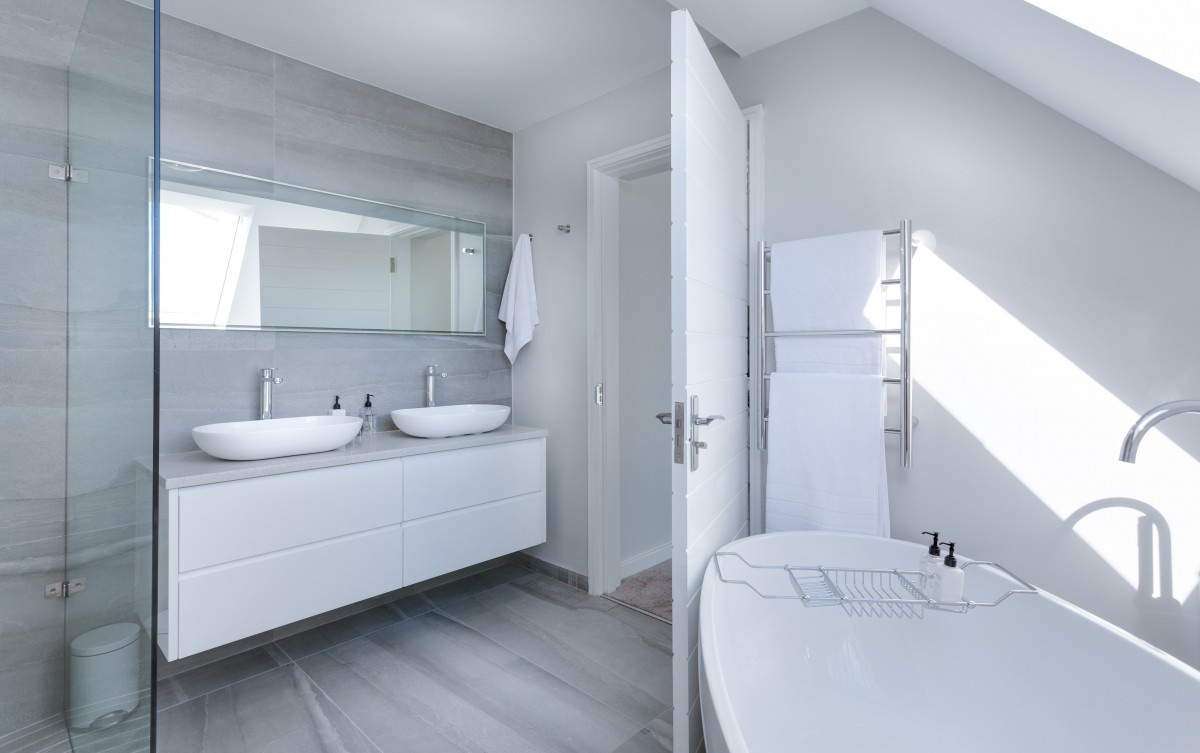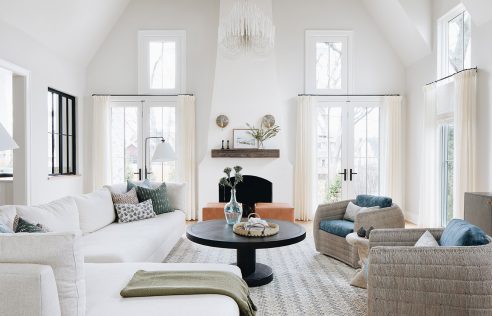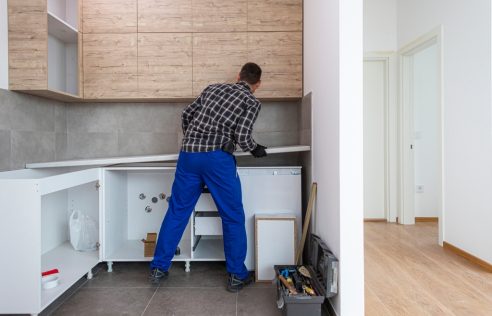How to Plan the Design and Layout of Your Bathroom
Designing a bathroom plan is not always easy. There are a number of essential criteria that will dictate the layout of this room. Many points must be considered to make the room practical, aesthetic, functional, and comfortable. What are the points to take into account for a bathroom plan? In this post, you’ll discover the keys to facilitate your reflection and get the bathroom that suits you.
Locate the drains and water inlets
In a new building
If your project is a new single-story construction, you have fewer constraints. Its location in the house will be based on practical criteria. The room must be located in the night zone of your house, next to the bedrooms, to maintain certain privacy and avoid the back and forth in the whole house.
If your project has a second floor, the bathroom on the upper level should be located above a bathroom on the lower level (kitchen, bathroom, toilet) to connect to the existing water supply and drainage systems easily.
In renovation
If your project is a renovation, its position in the house will be dictated by the existing situation and, in particular, the different possible points of connection to the drain and the hot and cold water supply: old kitchen or old bathroom, or not far from one of these two rooms.
However, if your future bathroom includes a toilet, its positioning must be close to the evacuation dedicated to the toilet.
Each sanitary must join the drains with a minimum slope of 1 to 2 cm per meter. This rule will allow you to see how far you can move away from the existing downspouts. However, there are solutions to gain a few centimeters: creating a platform, for example.
Other points of attention for the location
It is interesting to provide a window (even a small one) in a bathroom. In the case of a blind room, greater attention should be paid to ventilation.
If you are under the slope of the roof, in the attic, make sure to place the room to have sufficient height in at least one-half of it.
The surface of the bathroom
Everything depends on the role of the bathroom.
– If it is the family bathroom, the only one in the house. In this case, it must be able to accommodate two basins, a bathtub, and a shower: count a minimum of 5 to 6 m².
– If it is a bathroom used by children, and another bathroom exists in the house. This one will be able to make a minimum of between 3 and 4 m².
– If it is a secondary shower room or in a master suite. The room can be at least 2 m².
Clearance distances
You will find below the more or less standard dimensions of the bathroom. Still, another dimensional criterion must be considered: the clearance distances, i.e., the space left free in front of the bathroom to move around and access the various functions.
For this, don’t hesitate to put yourself in a situation.
Apart from the standards for disabled people, there are no predefined rules. It all depends on your body size, the presence or not of swinging doors requiring a sufficient distance, and the room’s general layout. Count on at least 60 cm of clearance in front of a sink top, for example.
Bathroom plan: the elements to integrate
Take stock of your desires and needs. List and prioritize them. Take the time to analyze your habits or what you have been missing until now.
– Do you prefer a bath or shower? Both?
– One or two basins?
– Should the toilet be in the room?
– Should the bathroom also be used as a laundry room?
– Will several people use it at the same time?
– Do you need a lot of storage space?
– What is your heating system?
The bathtub

There are many different styles and sizes of bathtubs. Let’s look at your choices from the old-fashioned space-saving clawfoot bathtub to the corner balneo-chromotherapy bathtub.
– Type of installation: wall-mounted or island? Built-in or free-standing?
– Shape: Rectangular / corner bathtub / asymmetrical cutaway (to meet certain space or passage constraints)?
– Dimensions: 70 to 90 cm wide and 140 to 190 cm long for the straight bathtub, 115 × 115 to 160 × 160 cm for the corner bathtub.
The shower
For the shower, the choice of size depends on the type of shower desired: with a tray or a tiled shower, often referred to as a walk-in shower.
– Italian shower: this type of minimalist, uncluttered shower, at the same level and often made of the same material as the floor, is often the stuff of dreams; however, it is important to realize that its implementation is more complicated and must be carried out with the utmost care (especially in terms of waterproofing). Its size and shape are free; it is a true custom shower.
– Shower with tray: there is a very large number of shower trays, both in size and shape (square, rectangular, quarter round, and asymmetrical) and materials (resin, acrylic, ceramic, enameled steel, etc.).The smallest are square 70 × 70 cm, and we can find sizes up to 170 × 90cm.
– Type of installation: against a wall, in a corner, in a niche, on an island? This positioning will lead to different solutions regarding its closure (shower screen, curtain).
– Finally, an important technical point about the shower: the hot and cold water supply and the choice of fittings, built-in or exposed. A built-in tap requires the pipes to pass through a lining.
The toilets
As seen previously, the location of the toilet is the one on which we have the least flexibility: indeed, it must be located as close as possible to the drain (large diameter drain pipe Ø 90 mm approx.)
If it is large enough, its location in the bathroom must provide a minimum of privacy: it can be separated from the rest of the room by a small wall, a pretty screen, or a storage element …
Finally, for the installation, you have the choice between suspended toilets, requiring the presence of a built-in or covered support frame, and horizontal or vertical outlet toilets.
The washbasin unit

Your choice is between a vanity unit with one or two basins and significant storage space at the bottom or a more refined version: a single washbasin on a pedestal or in a column.
– The furniture under the basin: the most compact, with a single basin, will measure 40 cm wide by 35 cm deep (almost a washbasin); more commonly, for a basin, count about 60 × 45 cm, and for two basins, 120 × 50 cm. The custom-made can allow you to obtain the desired size.
– The simple washbasin is presented on foot, on a column, or suspended without lower storage. Its minimalist look sometimes saves space.
Laundry machines
If your bathroom is also used as a laundry room, generally count 60 × 60 cm for a standard machine size. As for the installation, it depends on whether it is a front-loading or a top-loading machine. Depending on the type of machine, you can place them next to or on top of each other. Don’t forget to provide a place for the laundry basket and washing products, ideally next to the machines.
Heating
If you don’t have underfloor heating and need to provide heating for the room, a towel warmer is the ideal option, whether the bathroom is small or large.
Hot water production: depending on your home’s heating system, a hot water tank may be required in the bathroom. Its volume generally depends on the number of people living in the household, from 50 to 300 L.
Most tanks are cylindrical (about 60 cm in diameter) and can be placed on the floor or suspended (in this case, the wall or ceiling receiving the tank must be load-bearing or reinforced). If you have a high ceiling, you can plan to place the balloon horizontally under a formwork (accessible). Still, there are now also less bulky (rectangular) balloons and more aesthetic.
Bathroom plan: don’t forget electrical safety
Electricity meets strict standards, and when it is located in a bathroom, the National Electrical Code (NEC) applies to avoid any risk of an accident. It defines different volumes around the water points, determining which devices can be admitted or not, according to their protection index and class. The bathroom plan must therefore take into account these different factors.
What is the optimal layout of the elements on a bathroom plan?
Each bathroom has its own optimal layout, which must consider all of the above elements. Even if some configurations seem more evident than others, a typical plan may inspire you but may not correspond entirely to your desires and your way of life.
If you are unsure about the configuration of your bathroom, don’t hesitate to call an interior designer who will be able to advise you according to your needs and your budget.



Pingback: How to Transform Lost Attic Space | MyHome